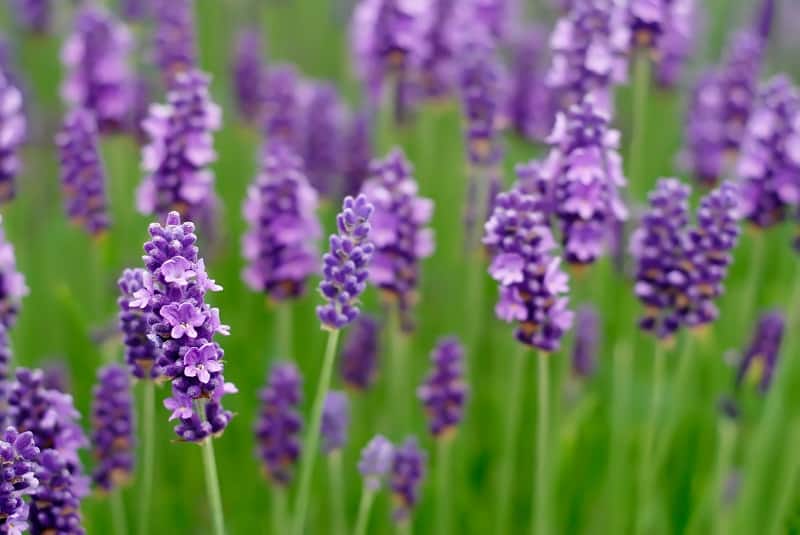
Lavender comprises 47 known species of flowering plants of the mint family Lamiaceae. These plants are native to the Old World and the Canary Islands, although they are now widely cultivated across Europe, the Mediterranean, Southwest Asia and Southeast India. They are cultivated as ornamental plants, culinary herbs and for the extraction of essential oils. These perennials bloom from June to August but, like most plants, they are also prone to infections and conditions that cause yellowing leaves.
Lavender turning yellow: What are the reasons?
Nutrient-rich soil
Yellowing lavender could be due to a soil mix that is too high in nitrogen. These plants do best in low to medium fertility potting soil. If the soil contains too much nitrogen from manure or enriched compost, the lavender tends to turn yellow and bear fewer flowers.
To fix this, adjust the soil before planting. Lavender thrives in a well-draining soil mix that ideally contains at least one-third horticultural sand or grit and two-thirds ordinary potting soil, which is available at garden centers. The sandy mix recreates the sandy soil type that lavender is accustomed to in countries like Portugal, Spain and France.
If the plants are placed in a low to medium fertility soil mix, they will bear more flowers, the foliage will be greener, and they will produce a stronger aroma. If your lavender plants have yellow leaves, it may take a few weeks for them to recover when transferred to a new potting mix. Just be patient, as they will eventually regain their green hue.
Overfertilization
Lavender thrives in low to medium fertility soils, which is why they do not require additional fertilizers. However, some plant owners tend to fertilize their plants regardless. This results in yellowing leaves, fewer blooms, a less intense aroma and an untidy appearance.
To fix this, adjust the new soil and use horticultural sand or grit to create a more porous mix for good drainage and root respiration.
Root rot due to overwatering
Lavender could also turn yellow due to root rot, which results from overwatering the plants. If you are watering too frequently, or if the soil is slow draining or the pots do not have drainage holes, root rot will likely develop. Lavender in pots usually just needs a good soak once every two to three weeks. If you are watering more than this, you are probably overwatering.
Lavender is a heat-tolerant plant that prefers its soil to dry out between watering. Soil that is always moist promotes fungal diseases like root rot, causing the leaves to turn yellow or brown, and possibly also droopy. Make sure to add a generous portion of sand or grit before you plant the lavender to ensure proper soil drainage.
To fix the root rot problem, remove the affected plant from the soil and snip off the rotten roots with a sterile pair of pruners. Leave the healthy and normal roots. Replant the lavender in a fresh potting mix with plenty of sand or grit, and allow it to dry out for two weeks. The plants should be placed in a shady location away from rainfall to allow the roots and soil to dry out.
After the two week period, water your plant once every two or three weeks until the fall. Avoid watering the plants during winter as they are in a state of dormancy.
If detected early, root rot can be managed and the plants can recover accordingly.
Stress due to inappropriate pots
Lavender turning yellow could be attributed to stress in lavender planted in inappropriate, or too-small, pots. Plants become root bound if planted in pots of the wrong size. To fix this, plant your lavender in pots at least 12 to 16 inches across.
With the right size pot, the plants will have enough space to establish themselves, while the soil will have ample moisture and nutrient access. To avoid the onset of root rot, the pots should also have adequate drainage and should not stand in stagnant water.
Soil pH
Lavender plants prefer soil that is neutral or alkaline, although they can tolerate mild soil acidity. If they are planted in an acidic soil mix, they may have a hard time absorbing nutrients, and this may cause yellow leaves and stunted growth.
To fix the problem, avoid using acidic compost and plant the lavender in normal potting soil. Add at least a tablespoon of horticultural lime or a half-cup of wood ash to make sure the soil mix is within the correct range. If you suspect that the soil is too acidic, remove the plants at once and replant them in new soil with lime to allow them to recover.
Conclusion
Lavender plants are drought-resistant perennials grown for their essential oils and as culinary herbs. They can suffer from yellowing leaves if their soil is too rich in nutrients or if they are over-fertilized. The leaves may also yellow due to root rot from overwatering, or due to the soil’s pH levels.
Image: istockphoto.com / blueenayim